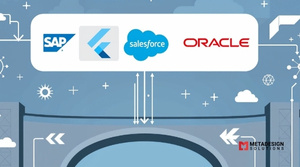Introduction:
In many enterprises, legacy systems built with COBOL still run critical business operations. However, as technology progresses and user expectations evolve, these systems often become a bottleneck, unable to meet modern demands for flexibility, user experience, and scalability. The challenge, then, is to modernize legacy COBOL systems without causing downtime or disruptions to critical operations.
One effective strategy to achieve this is by wrapping COBOL services in modern Flutter micro-frontends—an approach supported by comprehensive Flutter app development services—enabling businesses to leverage the best of both worlds: legacy systems’ robustness and modern, flexible, and scalable user interfaces. This blog explores how to implement zero-downtime migration by integrating COBOL services with Flutter micro-frontends, ensuring a smooth transition while preserving operational continuity.
1. The Challenge of Migrating Legacy COBOL Systems
COBOL (Common Business-Oriented Language) has been the backbone of many business-critical applications, particularly in industries like finance, banking, and insurance. However, the rapid pace of change in the tech industry has left COBOL-based systems difficult to maintain and integrate with modern technologies.
Some of the major challenges associated with COBOL systems are:
- Limited developer expertise: As COBOL’s popularity has waned, finding skilled COBOL developers has become increasingly difficult.
- Lack of modern UI/UX: COBOL applications often have outdated user interfaces that cannot meet modern design standards.
- Rigid and monolithic architectures: COBOL systems are often monolithic and challenging to scale or update incrementally.
2. Zero-Downtime Migration: The Need for Continuous Operations
In today’s fast-paced business environment, any migration that causes downtime can result in significant operational disruptions, loss of customer trust, and financial losses. Zero-downtime migration is critical to ensuring that legacy systems continue to operate without interruption while transitioning to modern solutions.
This approach is particularly important for enterprise systems built on COBOL, as many of these systems are central to day-to-day operations. Migrating such systems without downtime requires careful planning, robust integration strategies, and modern technologies that enable seamless transitions.
3. Modernizing COBOL Services with Micro-Frontends
The concept of micro-frontends involves breaking down the frontend monolith into smaller, independent modules that can be developed, deployed, and scaled independently. This approach is well-suited for migrating legacy systems like COBOL because it allows the gradual replacement of legacy user interfaces with modern technologies, such as Flutter, while still interacting with the underlying COBOL services.
Key Benefits of Micro-Frontends in Zero-Downtime Migration:
- Modularization: Micro-frontends allow you to incrementally migrate parts of the frontend, keeping the rest of the system operational.
- Decoupling: By decoupling the frontend from the backend, you can modernize the user interface without disrupting backend COBOL services.
- Seamless Integration: Micro-frontends enable integration with existing systems, allowing the transition to modern technologies without a full system rewrite.
Modernize Without Rewriting Everything.
We specialize in wrapping COBOL systems with modern micro-frontends.
4. Integrating COBOL Services with Flutter Micro-Frontends
To wrap COBOL services in Flutter micro-frontends, we need to bridge the gap between the modern Flutter interface and the legacy COBOL systems. The solution involves creating an integration layer that allows the frontend to communicate with the COBOL services through APIs, web services, or middleware.
Step-by-Step Approach to Wrapping COBOL Services:
1. Expose COBOL Services via APIs:
Many COBOL systems expose business logic via web services, such as SOAP or RESTful APIs. If your COBOL services aren’t exposed yet, you will need to create an API layer that allows modern frontends (e.g., Flutter) to communicate with these services.
- Example: Using Java or .NET to create a service layer that connects to COBOL via JCL or CICS.
java code:
@Path("/cobolService")
public class COBOLService {
@GET
@Path("/getTransactionData")
public String getTransactionData() {
// Logic to interact with COBOL system and return data
return cobolTransactionData;
}
}
2. Building Flutter Micro-Frontends:
Once the COBOL services are available via APIs, you can create Flutter micro-frontends that consume these services. Flutter is ideal for building responsive, cross-platform interfaces and can easily interact with backend services using HTTP requests or WebSocket connections.
- Example of a Flutter micro-frontend that fetches data from the backend API:
dart code:
- Example of a Flutter micro-frontend that fetches data from the backend API:
import 'package:flutter/material.dart';
import 'package:http/http.dart' as http;
class CobolServicePage extends StatefulWidget {
@override
_CobolServicePageState createState() => _CobolServicePageState();
}
class _CobolServicePageState extends State<CobolServicePage> {
String transactionData = '';
@override
void initState() {
super.initState();
fetchTransactionData();
}
// Fetch data from the API exposed by COBOL service
Future<void> fetchTransactionData() async {
final response = await http.get(Uri.parse('https://example.com/api/cobolService/getTransactionData'));
if (response.statusCode == 200) {
setState(() {
transactionData = response.body;
});
} else {
throw Exception('Failed to load data');
}
}
@override
Widget build(BuildContext context) {
return Scaffold(
appBar: AppBar(title: Text('COBOL Service Data')),
body: Center(
child: Text(transactionData.isNotEmpty ? transactionData : 'Loading...'),
),
);
}
}
3. Seamless Transition Between Legacy and Modern Interfaces:
The key benefit of micro-frontends is that they allow the frontend to be broken down into independent, deployable modules. For example, a legacy COBOL UI can be replaced with a modern Flutter interface in stages. One part of the application could use the old UI, while others use Flutter components, and over time, you can transition the entire application without any downtime.
4. Data Sync and State Management:
Use state management techniques in Flutter (e.g., Provider, Riverpod, or Bloc) to manage and synchronize state across various parts of the application. This ensures that the frontend remains consistent, even if some parts of the system are still relying on legacy COBOL components.
5. Ensuring Zero-Downtime During Migration
Achieving zero downtime during the migration process requires careful planning and execution. Here are a few strategies to ensure minimal disruption:
5.1. Gradual Rollout
Migrate functionality in small, manageable phases. For example, you could start by migrating the UI of a single feature (e.g., user account management) to a Flutter micro-frontend and test it in parallel with the existing COBOL interface. This ensures that users can still use the legacy system while testing the new frontend.
5.2. Use Feature Toggles
Implement feature toggles to control which parts of the application use the new Flutter frontend. This way, you can selectively enable the new system for specific users or regions, reducing risk and ensuring no downtime during the migration.
dart code:
// Example of feature toggle in Flutter
bool isNewFeatureEnabled = true;
@override
Widget build(BuildContext context) {
return Scaffold(
body: isNewFeatureEnabled
? NewFeatureWidget()
: LegacyFeatureWidget(),
);
}
5.3. Data Synchronization
Real-time data synchronization between the COBOL services and Flutter frontend is essential. Use WebSockets or RESTful APIs to push updates from the backend to the frontend in real time, ensuring that data is always up to date.
6. Challenges in Zero-Downtime Migration
While the concept of wrapping COBOL services in modern Flutter micro-frontends provides significant benefits, several challenges may arise:
- Legacy System Constraints: COBOL systems often run on mainframes and have limited flexibility for integration with modern technologies. Ensuring that legacy systems can expose data in a usable format for micro-frontends can require custom middleware and additional development effort.
- Data Integrity: Synchronizing data between legacy systems and new micro-frontends can be complex, particularly when dealing with inconsistent or outdated data formats.
- Performance Considerations: Integrating legacy systems with modern frontends could introduce latency in data processing or increase load on the backend systems.
7. Conclusion
Wrapping legacy COBOL services in modern Flutter micro-frontends offers a flexible, scalable approach to migrating enterprise applications without downtime. By incrementally upgrading the frontend and integrating with existing COBOL systems through APIs, businesses can modernize their user interfaces and deliver a seamless experience to users. With careful planning, real-time data synchronization, and robust state management, enterprises can bridge the gap between legacy systems and modern technologies, ensuring continuous operations and a smooth transition to modern architectures.
Related Hashtags:
#ZeroDowntimeMigration #FlutterMicroFrontends #LegacySystems #COBOLIntegration #Modernization #WebDevelopment #FlutterDevelopment #EnterpriseApps #APIIntegration #DigitalTransformation #SoftwareMigration #TechModernization #MicroFrontendArchitecture



